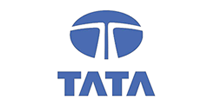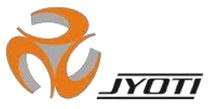Maintenance of HT (High Tension) and LT (Low Tension) Distribution Panels
Maintenance of HT (High Tension) and LT (Low Tension) distribution panels is crucial to ensure the smooth functioning and safety of electrical systems. Here are some general maintenance practices for both types of distribution panels:
1. Visual Inspection:
Regular visual inspections should be conducted to check for signs of damage, overheating, loose connections, or corrosion. Any abnormalities should be addressed promptly.Determine the route of the feeder line considering factors like terrain, existing infrastructure, and environmental impact. Design the line to meet electrical requirements, including voltage drop, load capacity, and insulation levels.
2. Cleaning:
Keep the panels clean and free from dust, dirt, and debris. Use a soft brush or compressed air to remove accumulated dust, especially from electrical components and connections.Procure the necessary materials such as conductors, insulators, poles or towers, transformers, and other hardware required for the construction of the feeder line.
3. Tightening Connections:
Periodically check and tighten all electrical connections to prevent overheating and ensure proper electrical conductivity. Loose connections can lead to arcing and electrical faults.Clear the right-of-way for the feeder line, removing any obstacles and preparing foundations for poles or towers. Ensure compliance with environmental regulations during site preparation.
4. Thermal Imaging:
Perform thermal imaging scans to identify hotspots caused by loose connections or overloading. Address any areas of concern immediately to prevent equipment damage or electrical fires.Install the towers or poles along the route according to the design specifications. Ensure proper alignment, foundation depth, and structural integrity to support the conductors and withstand environmental conditions.
5. Insulation Resistance Testing:
Regularly conduct insulation resistance tests to assess the condition of insulation materials. This helps identify any deterioration or moisture ingress that could lead to electrical faults.String the conductors between the towers or poles, maintaining proper tension and clearances according to design requirements. Install vibration dampers and spacer cables as needed to control conductor movement and prevent galloping or oscillation.
6. Functional Testing:
Test the operation of circuit breakers, relays, meters, and other protective devices to ensure they function correctly. This includes trip and close operations, as well as verifying the accuracy of meter readings.Mount insulators on the towers or poles to support the conductors and provide electrical insulation. Ensure proper selection and installation of insulators to withstand the electrical stress and environmental conditions.
7. Environment Monitoring:
Monitor environmental conditions such as temperature and humidity, especially in outdoor or harsh environments. Extreme conditions can affect the performance and lifespan of electrical components.Install transformers at appropriate locations along the feeder line to step down voltage levels as required for distribution to consumers. Ensure proper grounding and protection measures for the transformers.
8. Upgrading and Retrofitting:
Consider upgrading outdated components or retrofitting panels with modern protective devices and technologies to improve reliability and safety.Conduct tests to verify the integrity and performance of the feeder line, including insulation resistance, continuity, voltage regulation, and protection coordination. Commission the line for operation after successful testing.
9. Documentation and Record-Keeping:
Maintain detailed records of maintenance activities, test results, and any modifications made to the distribution panels. This information is valuable for troubleshooting, compliance, and future maintenance planning.
10. Training and Personnel Safety:
Ensure that personnel responsible for maintenance are properly trained in electrical safety procedures and protocols. Always follow appropriate safety precautions, such as wearing personal protective equipment (PPE) and de-energizing circuits before performing maintenance tasks.
11. Scheduled Maintenance:
Develop a scheduled maintenance plan based on manufacturer recommendations, industry standards, and the specific requirements of the electrical system. Regular preventive maintenance helps prevent unexpected failures and extends the lifespan of equipment.
12. Emergency Response Plan:
Establish an emergency response plan outlining procedures for responding to electrical faults, fires, or other emergencies involving distribution panels. Ensure all personnel are familiar with the plan and know how to safely respond to different scenarios.
By following these maintenance practices, you can help ensure the reliable and safe operation of HT and LT distribution panels, minimizing the risk of downtime, equipment damage, and electrical hazards.









































